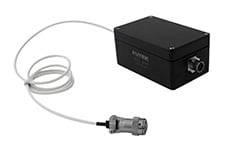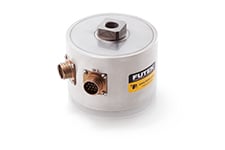What is Aircraft Structural Testing?
Fatigue in aircraft structures predates the aviation industry. Even the Wright Brothers' inaugural powered flight was postponed due to a fatigue crack in a hollow propeller shaft, and as early as the 1800s, engineers had already recognized fatigue in train axles. Before certification, large aircraft are required to undergo a fatigue test to determine their safe lifespan as per airworthiness standards. Small aircraft can demonstrate their safety through calculations, but due to added uncertainty, larger scatter or safety factors are usually employed.
Before a vertical take-off and landing (VTOL or eVTOL) aircraft is cleared for its first flight, it undergoes rigorous ground testing to evaluate its response to various expected loads and operating conditions. The purpose of aircraft structural testing is to precisely determine the behavior of the aircraft structure under different scenarios. Any design inadequacies must be identified during these tests to ensure optimal operational safety.
The objective of aircraft structural testing is to evaluate the VTOL aircraft's strength, durability, and reliability to ensure that it can withstand the operational stresses it will encounter during its service life. Full-scale fatigue testing of aircraft structures involves measuring the loads applied to various points on the aircraft structure. The airframe test involves subjecting the eVTOL aircraft structure to repeated loading and unloading to simulate the stresses that it will experience during take-off, flight, and landing.Periodic inspections of the structure around critical stress concentrations, such as holes and fittings, are made to determine when detectable cracks were found and to ensure that the cracking does not affect other areas of the test article.
Why are reliable and resilient Load Cells Crucial in Airframe Fatigue Testing?
FUTEK’s LCF pancake load cells provide extremely accurate and reliable measurements. These sensors are fatigue-rated and have overload protection features that allow them to withstand the repeated loading and unloading cycles involved in an aircraft fatigue test. Overload protection features help prevent damage to the load cells when the loads exceed their maximum capacity.
Mounting the LCF load cells in line with the hydraulic jacks of the VTOL airframe testing structure enables real-time measurements of the loads applied, which allows the validation and verification team to adjust the testing parameters as necessary to simulate the operational stresses accurately.
Dual-channel load cells with redundancy are also crucial components in aircraft structural fatigue testing. These load cells have two channels, each of which measures the loads applied to the aircraft structure independently. Redundancy in load cell systems is critical in ensuring that accurate measurements of the loads applied to the aircraft structure are always available. If one channel fails, the other channel can continue to provide measurements, preventing downtime in the testing process.
Accuracy and reliability of load cell systems used in aircraft structural fatigue testing is paramount. That said, it is recommended that these devices to be calibrated to the Z540 calibration standard performed in an A2LA-accredited calibration lab. Calibration to these standards ensures that the load cell systems provide accurate and reliable measurements of the loads applied to the aircraft structure.
Aerospace-graded Signal conditioning
Another critical component of load cell systems that are used in VTOL and eVTOL aircraft structural fatigue testing is the Skydrol-resistant load cell amplifier. Skydrol is a hydraulic fluid used in the aerospace industry, and it is known to be highly corrosive to electronic components. Skydrol-resistant load cell amplifiers are designed to withstand exposure to this fluid, ensuring that the load cell system functions properly during testing.
How it Works
Mounting: Hydraulic actuators are used to apply loads to the airframe structure, either directly or through the use of mounting fixtures to distribute the loads. An LCF Pancake load cell is placed in line with the actuator and is used by the load controller to control the loads into the actuator during the aircraft fatigue test.
Signal Conditioning: Interconnecting the load cells with the QIA117 Skydrol-resistant signal conditioner and integrating the data acquisition system and the hydraulic control system allows for the measurement of the loads applied to the aircraft structure during testing.
Airframe Fatigue Testing: Performing the aircraft structural testing involves subjecting the aircraft structure to various loads and stresses to simulate in-flight conditions. The LCF Pancake load cells measure the loads applied during the testing process.
Data Analysis: Analyzing the data involves reviewing the load data collected by the load cells to ensure that the loads applied during the full-scale fatigue testing of the aircraft structures accurately simulate the actual in-flight conditions. This ensures the accuracy of the testing process and the safety of the aircraft.
Contact Us
Please Contact Us with questions.
What is Aircraft Structural Testing?
Fatigue in aircraft structures predates the aviation industry. Even the Wright Brothers' inaugural powered flight was postponed due to a fatigue crack in a hollow propeller shaft, and as early as the 1800s, engineers had already recognized fatigue in train axles. Before certification, large aircraft are required to undergo a fatigue test to determine their safe lifespan as per airworthiness standards. Small aircraft can demonstrate their safety through calculations, but due to added uncertainty, larger scatter or safety factors are usually employed.
Before a vertical take-off and landing (VTOL or eVTOL) aircraft is cleared for its first flight, it undergoes rigorous ground testing to evaluate its response to various expected loads and operating conditions. The purpose of aircraft structural testing is to precisely determine the behavior of the aircraft structure under different scenarios. Any design inadequacies must be identified during these tests to ensure optimal operational safety.
The objective of aircraft structural testing is to evaluate the VTOL aircraft's strength, durability, and reliability to ensure that it can withstand the operational stresses it will encounter during its service life. Full-scale fatigue testing of aircraft structures involves measuring the loads applied to various points on the aircraft structure. The airframe test involves subjecting the eVTOL aircraft structure to repeated loading and unloading to simulate the stresses that it will experience during take-off, flight, and landing.Periodic inspections of the structure around critical stress concentrations, such as holes and fittings, are made to determine when detectable cracks were found and to ensure that the cracking does not affect other areas of the test article.
Why are reliable and resilient Load Cells Crucial in Airframe Fatigue Testing?
FUTEK’s LCF pancake load cells provide extremely accurate and reliable measurements. These sensors are fatigue-rated and have overload protection features that allow them to withstand the repeated loading and unloading cycles involved in an aircraft fatigue test. Overload protection features help prevent damage to the load cells when the loads exceed their maximum capacity.
Mounting the LCF load cells in line with the hydraulic jacks of the VTOL airframe testing structure enables real-time measurements of the loads applied, which allows the validation and verification team to adjust the testing parameters as necessary to simulate the operational stresses accurately.
Dual-channel load cells with redundancy are also crucial components in aircraft structural fatigue testing. These load cells have two channels, each of which measures the loads applied to the aircraft structure independently. Redundancy in load cell systems is critical in ensuring that accurate measurements of the loads applied to the aircraft structure are always available. If one channel fails, the other channel can continue to provide measurements, preventing downtime in the testing process.
Accuracy and reliability of load cell systems used in aircraft structural fatigue testing is paramount. That said, it is recommended that these devices to be calibrated to the Z540 calibration standard performed in an A2LA-accredited calibration lab. Calibration to these standards ensures that the load cell systems provide accurate and reliable measurements of the loads applied to the aircraft structure.
Aerospace-graded Signal conditioning
Another critical component of load cell systems that are used in VTOL and eVTOL aircraft structural fatigue testing is the Skydrol-resistant load cell amplifier. Skydrol is a hydraulic fluid used in the aerospace industry, and it is known to be highly corrosive to electronic components. Skydrol-resistant load cell amplifiers are designed to withstand exposure to this fluid, ensuring that the load cell system functions properly during testing.


